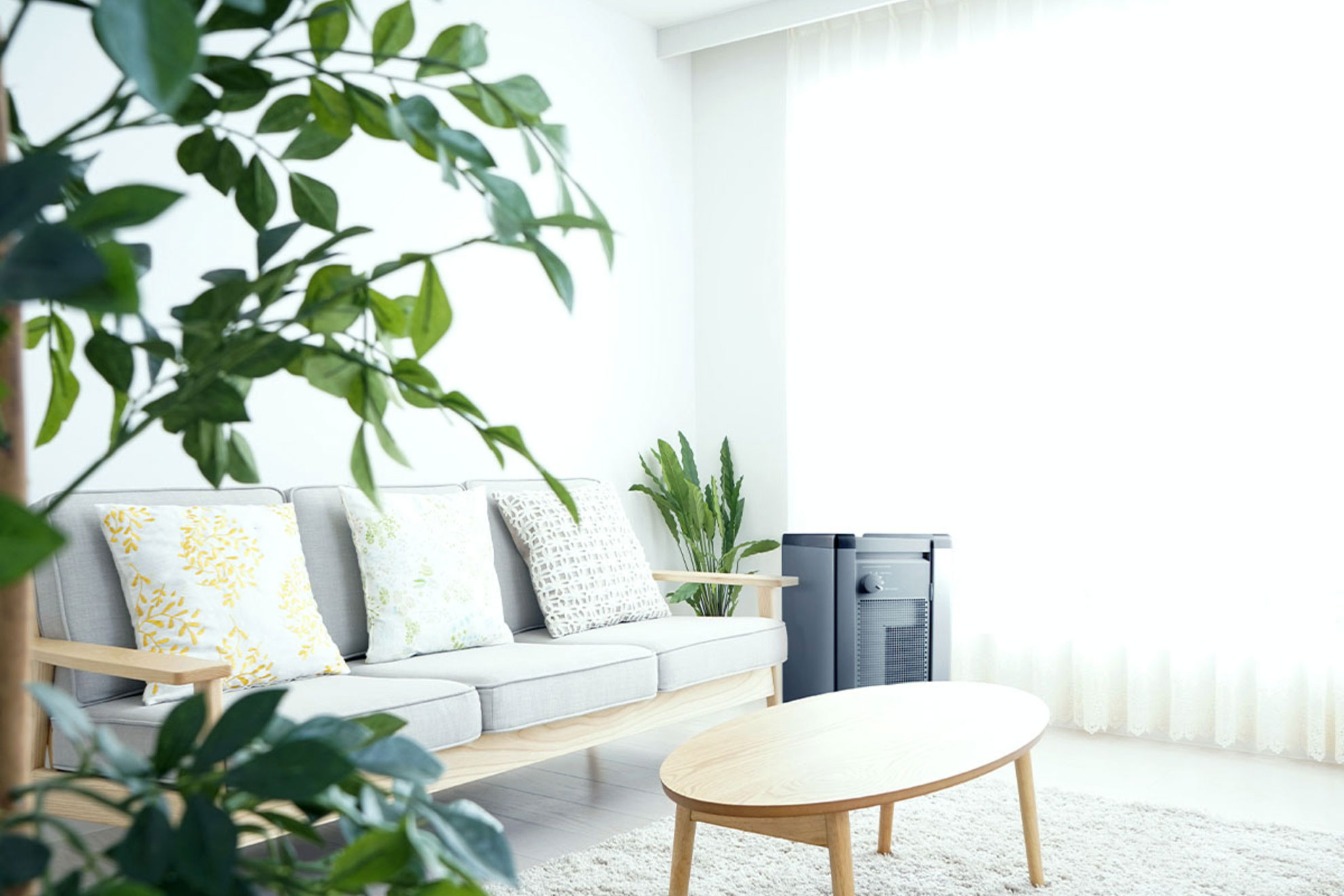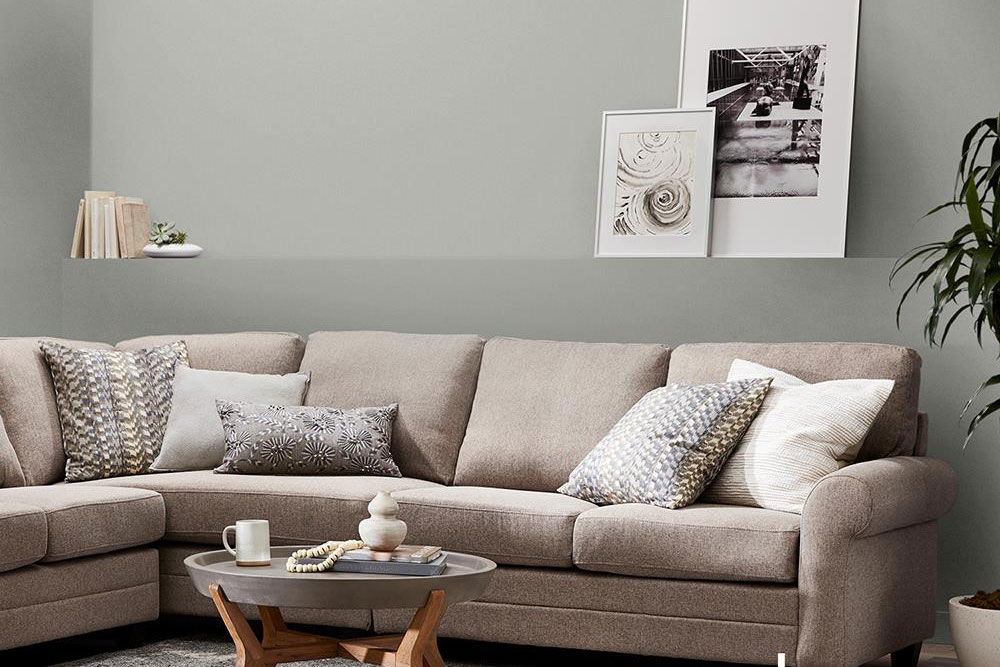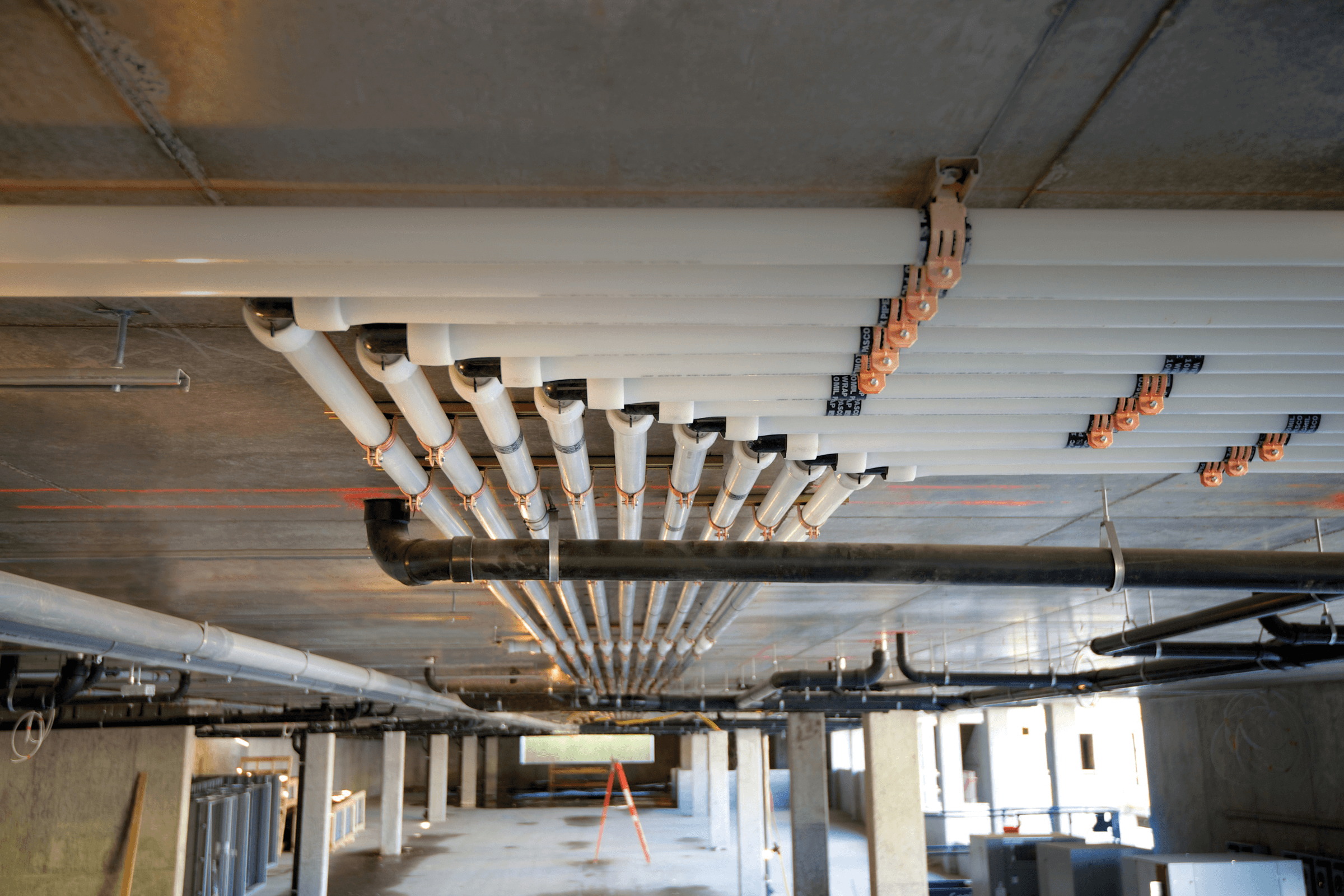Story at a glance:
- Indoor environmental quality refers to those conditions that have a significant impact on an occupant’s experience of a space.
- Good IEQ can help improve productivity, reduce absenteeism, prevent sick building syndrome, and more.
- IEQ typically takes into account five core factors: air quality, thermal comfort, acoustics, lighting, and aesthetics.
In an age where the average American spends 90% of their time indoors, it has never been more important for the spaces we work, learn, and live in to be designed with occupant health and well-being in mind.
Factors like air quality, thermal comfort, acoustics, lighting, and even building aesthetics all have an impact on the occupant experience. When considered as a whole, these conditions influence a building’s overall indoor environmental quality.
In this article we cover the basics of indoor environmental quality, including what it is and the impact it has on building occupants, as well as take a look at a few strategies for improving indoor environmental quality across five core categories.
What is Indoor Environmental Quality?
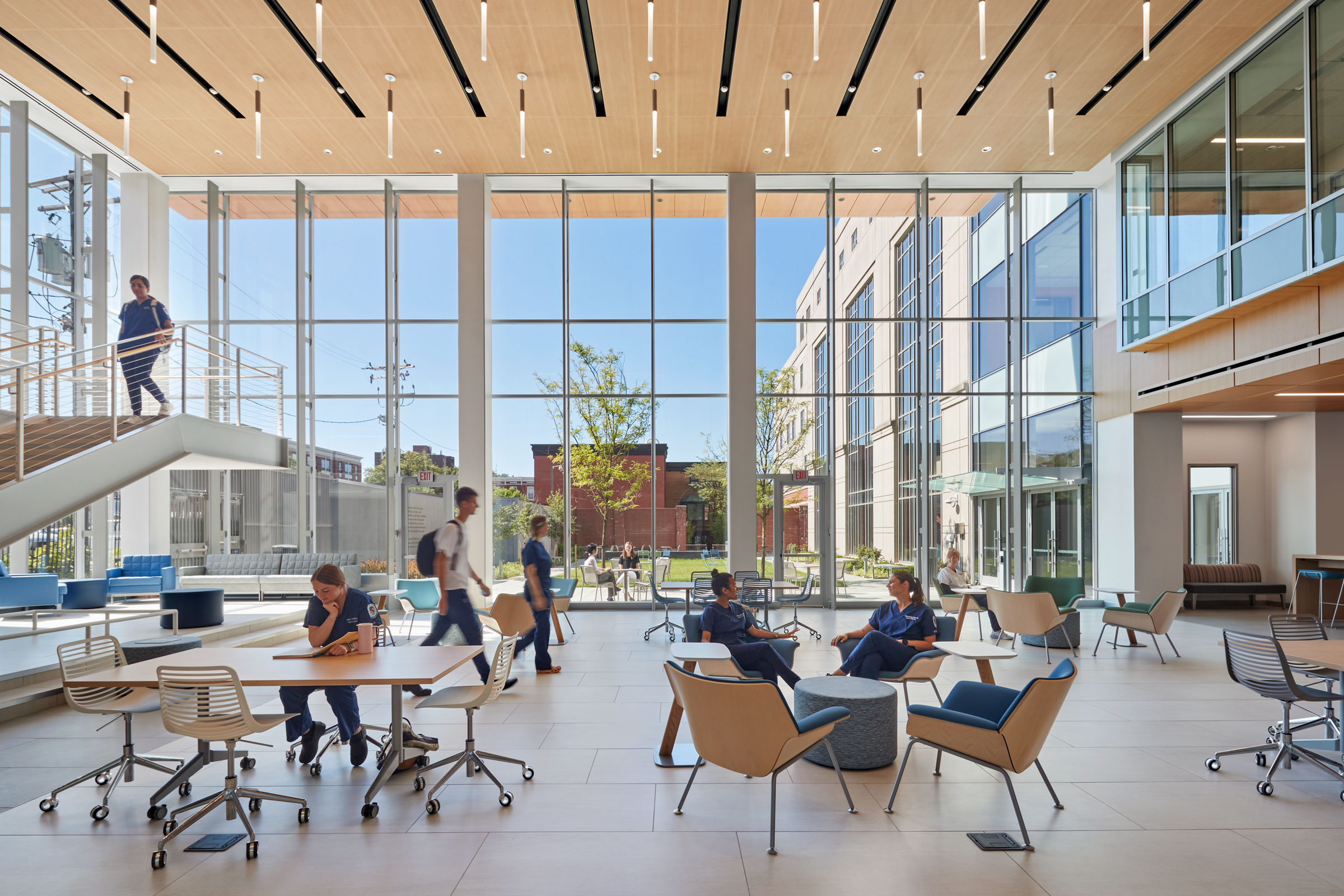
A design team made up of architects from Hord Coplan Macht and William Rawn Associates considered low VOCs, natural daylight, acoustics, and energy efficiency when renovating the Johns Hopkins School of Nursing. Photo by Robert Benson Photography
Indoor environmental quality (IEQ) is described as the conditions within a building that have a marked impact on an occupant’s experience of the space. Historically IEQ considerations have typically focused on factors like air quality, thermal comfort, acoustics, and lighting, but the concept has since expanded to include the overall aesthetics of a space as well—that is, how certain design choices can affect occupant’s mental and/or emotional states.
“Whether it’s productivity in an office space or a student being able to hear a teacher in a classroom, IEQ—including air, light, temperature, and sound—is definitely a key factor,” Anita Snader, senior sustainability manager at Armstrong World Industries, told gb&d in a previous article. “People are normally the most expensive part of a building when you include their salaries, benefits, and other factors, so we can’t just focus on the brick and mortar. We also have to focus on the well-being of the people inside.”
Good IEQ is known to help reduce absenteeism, improve productivity, prevent sick building syndrome, mitigate the spread of germs, and has a positive impact on occupant mental and physical health.
What Causes Poor IEQ?
Poor IEQ can be the result of many factors that, if left unchecked, can lead to sick building syndrome, or the phenomenon by which occupants only experience symptoms when inside—these symptoms are then relieved upon leaving. Poor IEQ has also been linked to increased rates of employee/student absenteeism, reduced productivity, and declining mental health.
Common causes of poor IEQ include:
- Volatile organic compounds (VOCs) that off-gas from coatings, adhesives, paints, and other materials
- Mold or mildew growth as a result of moisture intrusion
- Indoor combustion (e.g. stoves, fireplaces, heating equipment, et cetera)
- Radon and methane off-gassing
- People smoking indoors, near windows, or underneath uptake vents
- Leaky windows and doors that allow heat to enter or escape
- Outdoor pollutants (e.g. soil, pollen, dander, exhaust smoke, et cetera) that are tracked in or enter through vents, windows, or gaps in a building’s envelope
- Poor or inadequate lighting
When it comes to assessing building health and comfort, the most effective way to identify areas of concern is to conduct an Indoor Environmental Quality Assessment. An IEQ Assessment collects feedback from building occupants and uses various monitors to measure a building’s IEQ and performance conditions over a given period of time to identify actionable improvement strategies.
How to Improve Indoor Environmental Quality
There are many ways to improve indoor environmental quality, with most strategies falling into one of five core categories: air quality, thermal comfort, lighting, acoustics, and aesthetic quality/comfort.
Air Quality
Indoor air quality is perhaps the most important facet of IEQ when it comes to considering how the built environment impacts human health. “There are many documented health benefits of higher indoor air quality, including a reduced risk of respiratory issues, better sleep, higher productivity, and an overall feeling of well-being,” Todd Poisson, partner at BKSK, previously wrote for gb&d.
Ventilation & Air Filtration
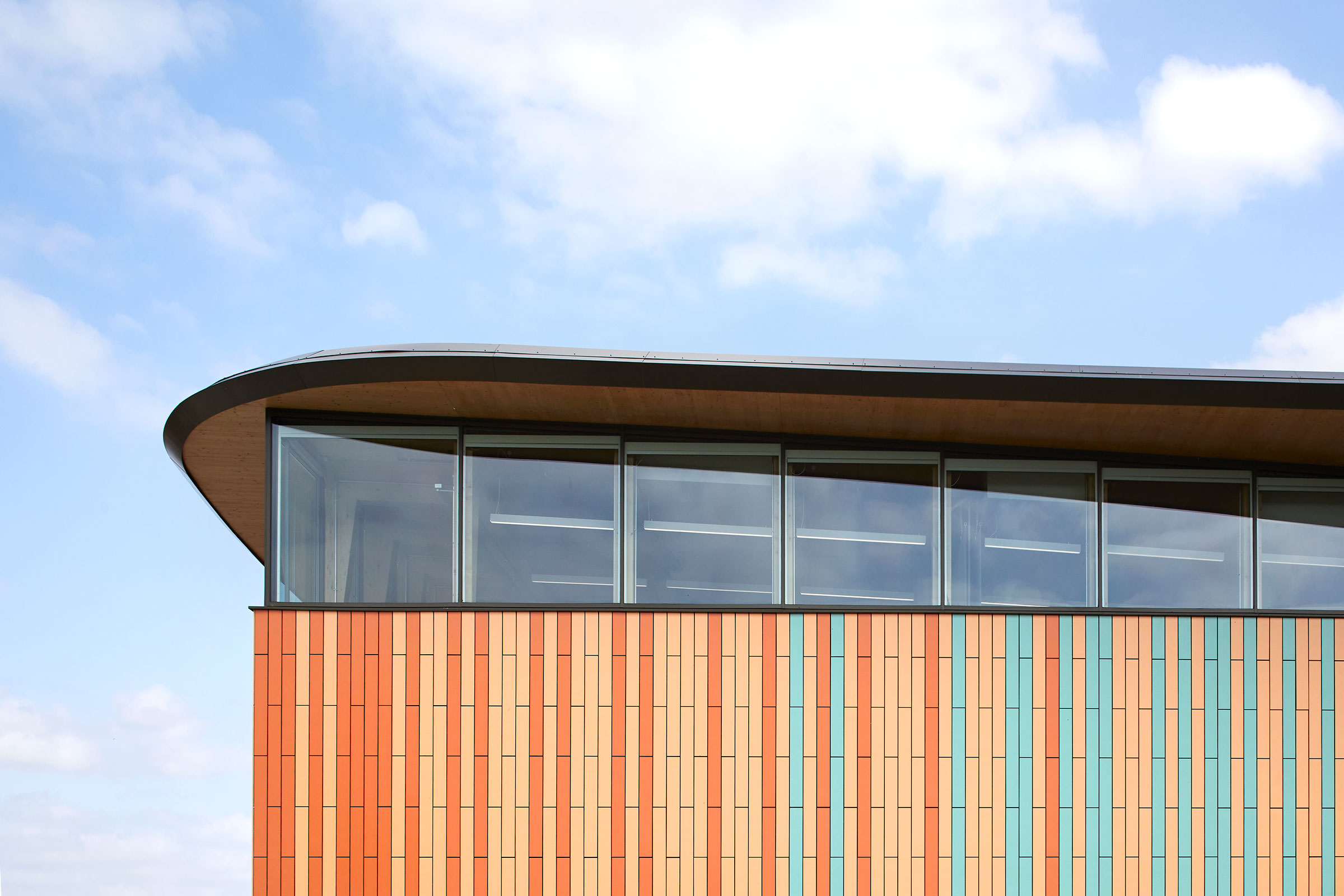
An energy-efficient envelope, passive ventilation strategies, and shading from the roof reduce energy consumption. Photo by Hufton+Crow Photography
All buildings require some form of ventilation, but not all ventilation systems are created equal. In fact, some ventilation systems can create stale, stuffy environments that facilitate the spread of allergens and pollutants. The best ventilation systems utilize high efficiency particulate absorbing (HEPA) filters to remove pollutants from outdoor air as it enters the building. HEPA filters have a MERV rating of at least 17 and are able to remove over 99% of particulates measuring 0.3 microns and larger from the air.
Where possible, operable windows should be considered as a means of providing occupants with the choice of natural ventilation.
Air Purification
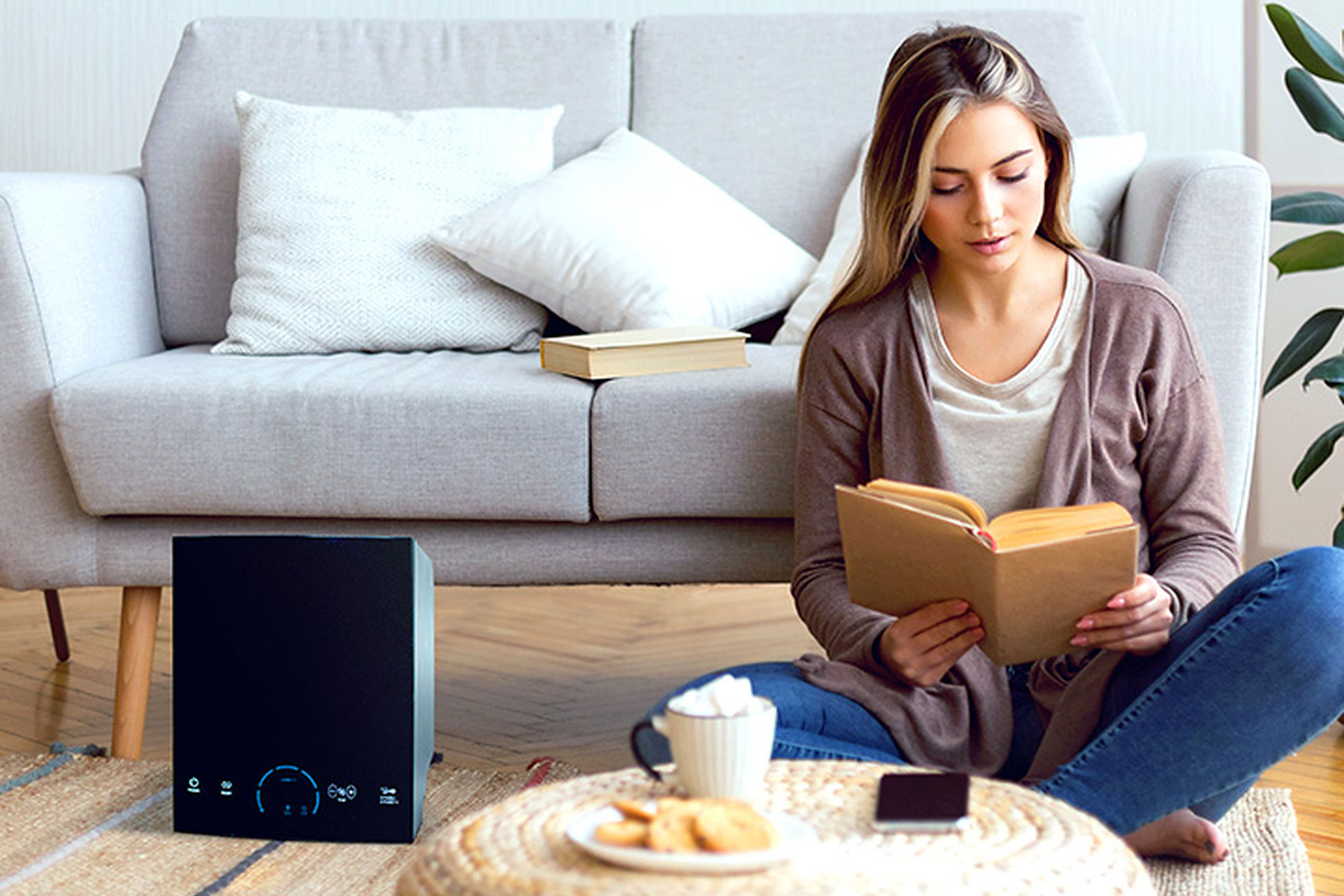
ActivePure offers portable solutions to make improved IAQ even easier. Photo courtesy of ActivePure
HEPA air filters are an excellent means of improving indoor air quality, but they aren’t infallible, either—especially when it comes to reducing the spread of airborne pathogens, which typically fall in the 0.1 to 0.2 micron range. To prevent the spread of mold, germs, and other disease-causing microorganisms, building owners are recommended to invest in a high-performance air purification unit.
ActivePure, for example, is an air purifier that uses technology originally developed in conjunction with NASA as a means of recreating the natural photolysis process—that is, the decomposition of molecules by the action of light—indoors. “ActivePure works against the [molecule’s] outer coats punching holes in the protective shell and inactivates the pathogen in the same way sunlight does, enabling it to work against the whole spectrum of pathogens,” Dr. Deborah Birx, chief medical and science advisor at ActivePure and former White House Coronavirus Task Force coordinator, previously told gb&d.
In practice this technology transforms ambient humidity in indoor environments into ActivePure molecules that then circulate through the indoor space, neutralizing bacteria, fungi, mold, pollen, pathogens, and VOCs.
Use of Nontoxic Materials

The wood products and paint used throughout Urban Frontier House are all free of Red List ingredients. Photo by Clark Marten
Proper ventilation is necessary for removing pollutants from interior spaces, but an even better approach to improving indoor air quality is removing the source of pollutants altogether. One way to accomplish this is by carefully selecting non-toxic, low VOC materials that will not leach or off-gas harmful chemicals into the air over time.
When choosing materials or products for a project, verify whether they bear the Red List Free label. The International Living Future Institute’s Red List is a comprehensive guide to the “worst in class” chemicals, materials, and elements known to cause serious harm to human and ecosystem health. Red List Free products fully disclose 100% of their ingredients at or above 100 ppm in the final product and do not contain any chemicals on the Red List.
Selection of nontoxic materials should also extend to any and all cleaning products used in regular maintenance and sanitation.
Air Sealing

Sealing leaks in a building’s envelope helps prevent energy waste and improves indoor air quality. Photo courtesy of Aeroseal
Leaks and gaps in a building’s envelope are a major source of energy waste, but also allow moisture and particulates like dust and pollen to enter, adding to interior air pollution. Locating and sealing up these areas of intrusion—such as around windows and doors, in attics and basements, around outlets and plumbing, et cetera—can significantly increase indoor air quality by reducing the risk of hidden mold growth while also reducing stress on existing ventilation systems.
Aeroseal is a leading provider of duct and air sealing technologies, offering a range of products designed to improve indoor air quality, elevate occupant health and comfort, and deliver premium energy savings.
Radon Testing
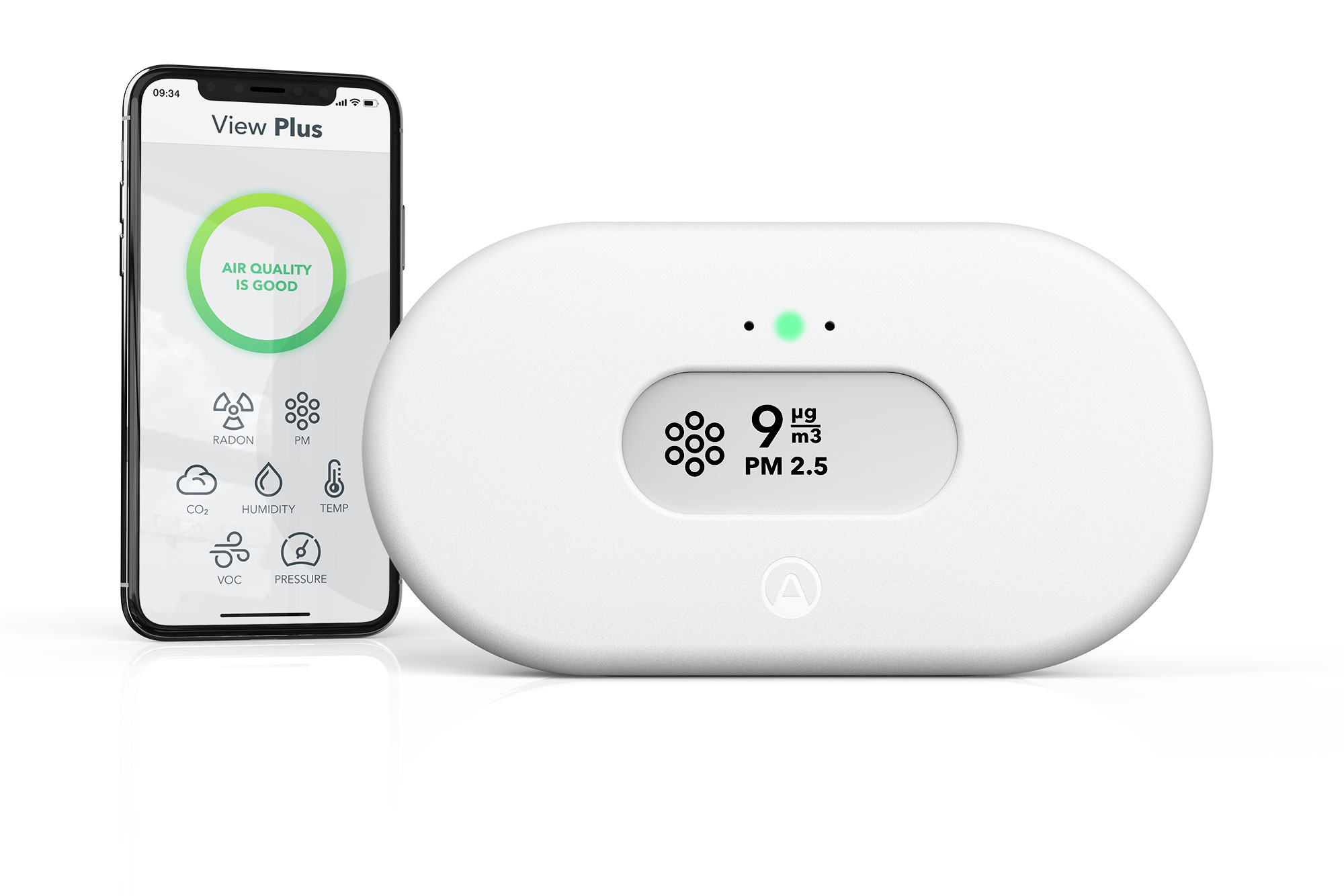
The View Plus air quality monitor includes a built-in display and sensors for radon, particulate matter (PM), carbon dioxide (CO2), humidity, temp, airborne chemicals (VOCs), and air pressure. Photo courtesy of Airthings
If you’re worried about the possibility of your building’s occupants being exposed to radon without knowing it, you can order a low-cost radon test kit from the American Lung Association to verify whether radon is present. If the test indicates that radon is present, you’ll want to look into having a radon mitigation system installed. There’s no way to get rid of the gas entirely, but a properly installed radon mitigation system will lower the amount of radon to EPA acceptable levels (below 4.0 pCi/L) and reduce the chance of developing radon poisoning to near zero.
Thermal Comfort
Buildings with good IEQ are capable of maintaining a comfortable interior temperature throughout the year and give occupants greater control over temperature regulation.
Continuous Superinsulation
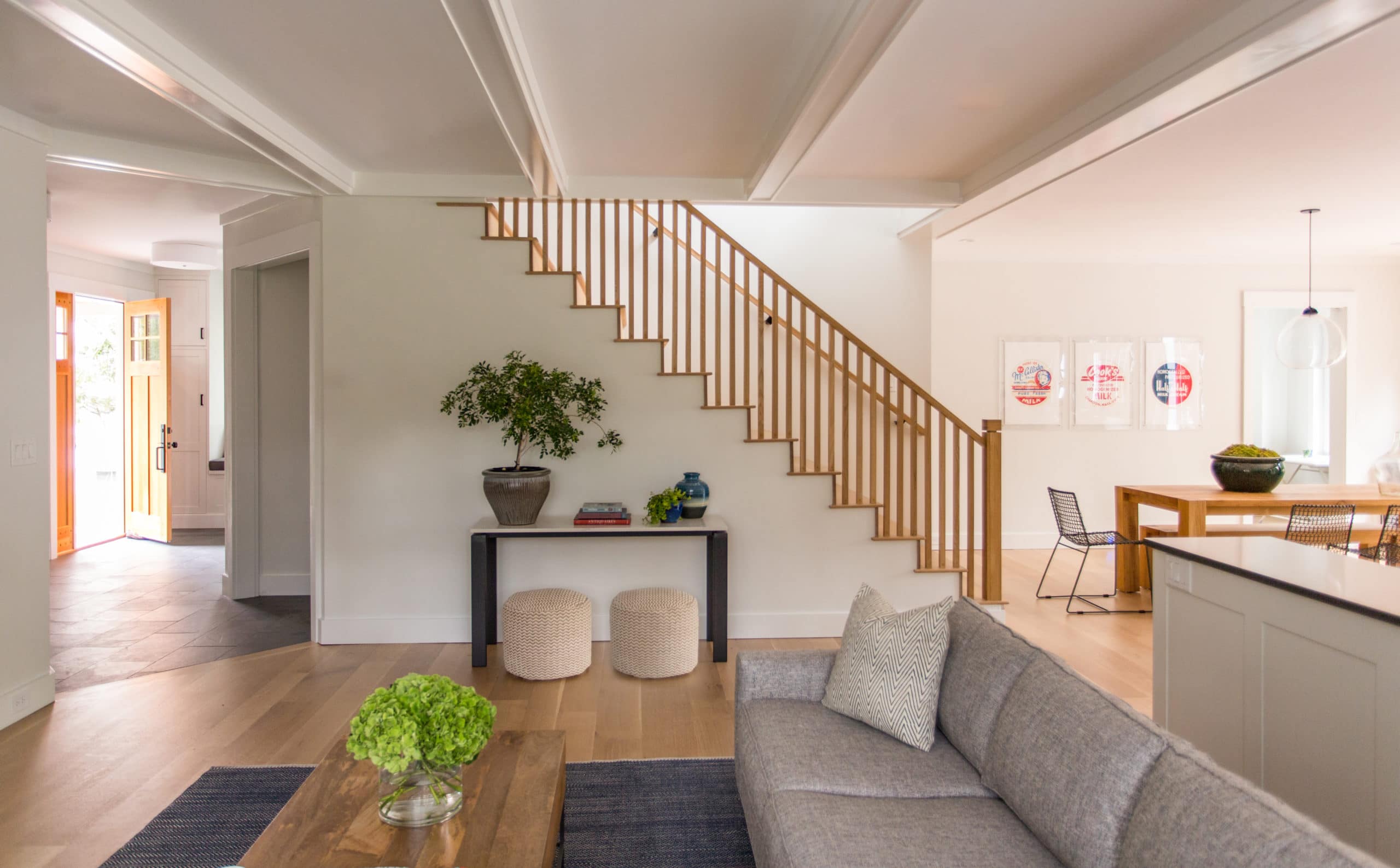
This LEED home in Wellesley, MA features continuous insulation, an airtight envelope, and triple-pane high-performance windows. Courtesy of Eric Roth
All buildings require some amount of thermal insulation in order to comply with local codes and regulations, but superinsulation allows buildings to go beyond those regulations and achieve greater IEQ. First coined in 1976 by Wayne Schick at the University of Illinois Urbana-Champaign, “superinsulation” is a term generally used to describe insulation with a very high R-value—typically R-40 for walls and R-60 for roofs—and is a staple of passive house construction.
When combined with an airtight envelope and heat recovery ventilation systems, superinsulation allows a structure to rely primarily on intrinsic heat sources (e.g. body heat of occupants and waste heat from appliances), greatly reducing the need for supplementary mechanical heating.
Radiant Heating
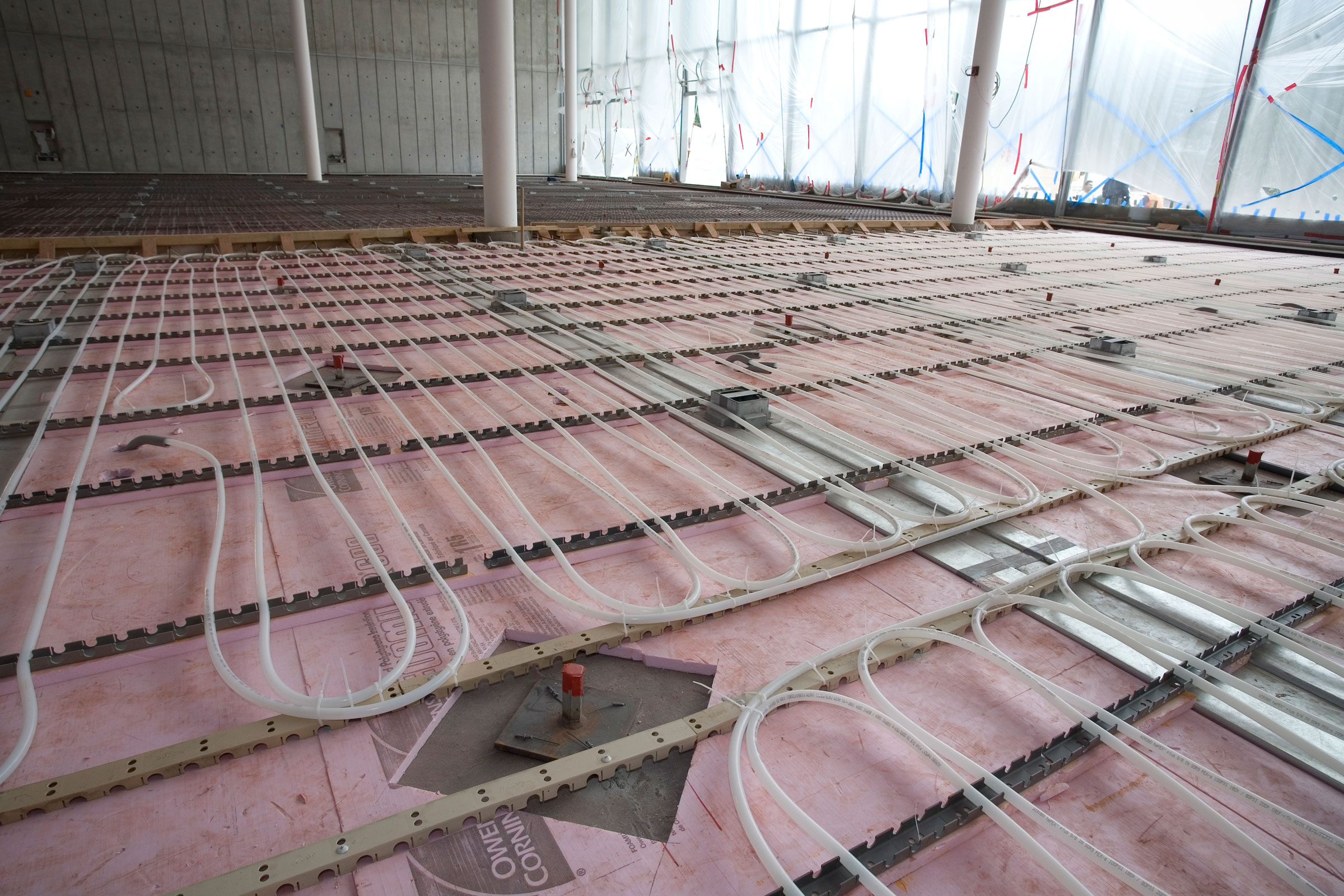
Uponor is a leader in energy-efficient underfloor heating and cooling and offers reliable, hygienic plumbing and infrastructure solutions that are lightweight and easy to install. Photo courtesy of Uponor
Continuous insulation and an airtight envelope can help to greatly reduce a building’s dependency on active heating and cooling systems, but that doesn’t mean those systems are entirely obsolete or without their place. In regions where some amount of supplementary heating is required during the winter months, radiant heating systems represent the most effective means of maintaining a comfortable indoor environment.
Radiant heating uses electricity, hot water, or air to supply heat directly to a building’s walls, floors, or ceiling panels. The heating coils or pipes make contact with the surface material and infrared radiation delivers the heat directly to a room’s occupants, objects, and air. This use of contact to transfer heat means radiant heating systems do not disrupt allergens the way conventional forced air systems can. Plus, the lack of forced air system means radiant heating and cooling requires a dedicated outside air system. This means they cut out all recirculated air that would come from forced air systems and lead to better indoor air quality and healthier spaces.
Radiant heating systems are also typically installed as individual zones, each of which is designed to heat a specific area in a building and is controlled by its own thermostat. “Not only does this provide custom comfort control when people are in a space, it also makes the system even more energy-efficient because people can keep the heat low in spaces that are not in use,” Kim Bliss, content development manager at Uponor, previously wrote for gb&d.
Thermal Controls
Regardless of how well-regulated a building’s heating and cooling is, there will always be occupants whose personal preferences differ from that of the baseline. This is where thermal controls can be extremely beneficial, as they allow individuals to tailor temperatures of their immediate surroundings to their liking.
Relative Humidity
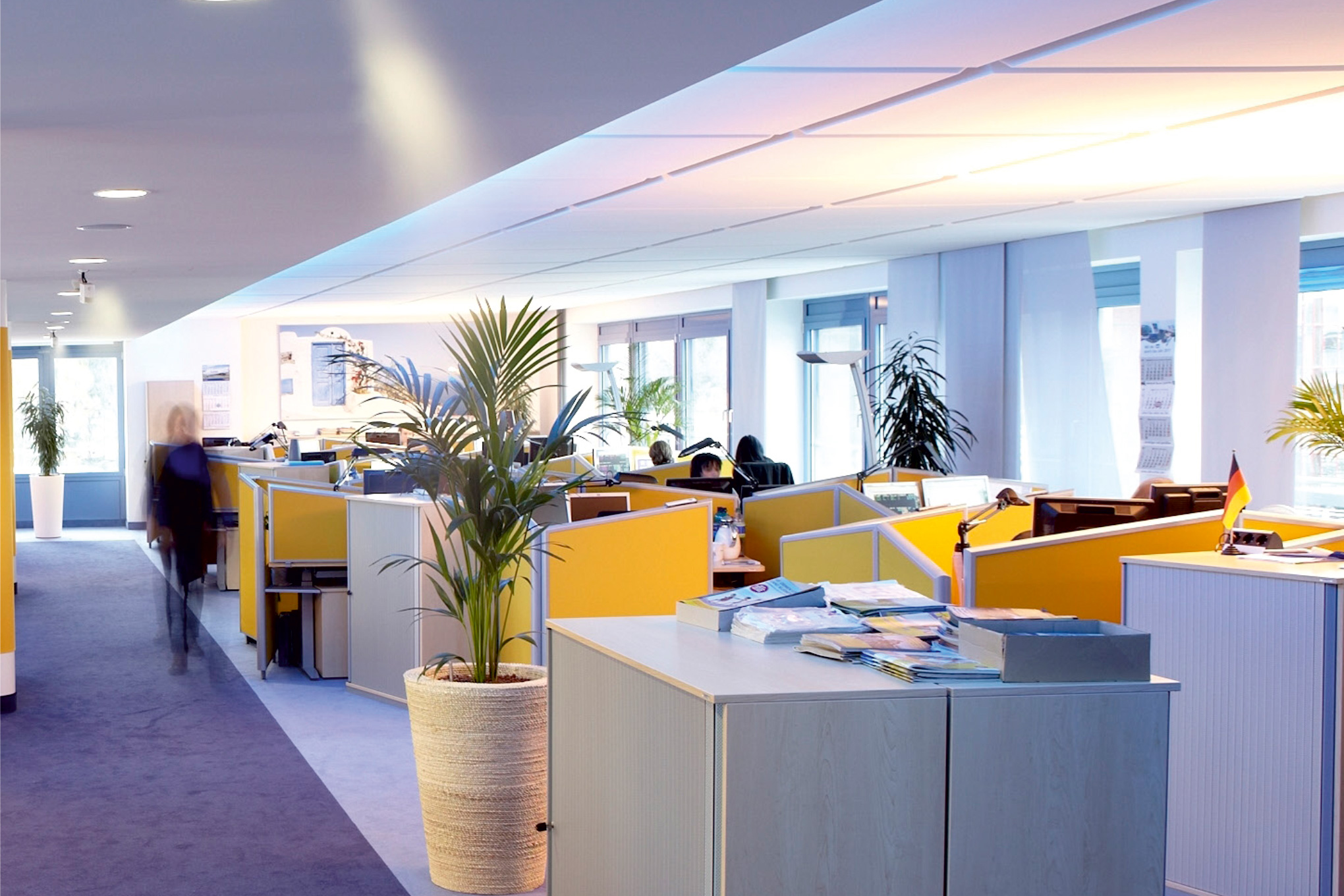
Condair humidifiers provide precise humidity control for workplaces looking to create healthy environments. Photo courtesy of Condair
Interior temperature, however, is not the only variable that influences thermal comfort—relative humidity also plays a part. A high relative humidity, for example, makes it harder for building occupants to lose heat via the evaporation of moisture on their skin and can lead to condensation, moisture buildup, and mold/mildew growth. Low relative humidity, on the other hand, can cause the skin, eyes, and throat to dry out. The EPA recommends that indoor relative humidity be kept below 60%, with 40 to 60% being considered the ideal mid-range in most contexts.
“The idea that mid-range indoor humidity is a powerful protector of our health is a revolutionary concept for building engineers,” Dr. Stephanie Taylor, an active member of ASHRAE and medical advisor to Condair Group, previously told gb&d. “It’s incredibly exciting that maintaining relative humidity indoors is now being recognized as ‘building medicine.’ Covid-19 has raised awareness of the importance of indoor environments and viral diseases in general.”
Geographic location and climate are the primary factors influencing ambient humidity, meaning each building will require a unique solution to achieve the desired indoor humidity level. Companies like Condair Group—the world’s leading manufacturer and specialist for industrial and commercial humidification, dehumidification, and evaporative cooling—can help building owners and managers figure out the best solution for their specific needs.
Acoustic Quality
An often overlooked factor that contributes to indoor environmental quality is acoustic design. In architecture, acoustic design refers to the strategies, features, and methodologies used to achieve “good sound” within a building, with the definition of “good sound” depending on what the room or building is being used for.
In most cases acoustic design strives to control how sound waves and sound energy reverberate off of a building’s interior so as to maximize vocal clarity while also reducing echoes and excessive sound transmission. Interior spaces with good acoustics can help improve productivity, enhance learning, and make for more enjoyable listening experiences.
Sound Absorbers, Baffles & Acoustic Clouds

The Primacoustic Paintables acoustic panels come in a bright white primed panel that’s paintable—great for restaurants, offices, and more. Photo courtesy of Primacoustic
Sound absorption panels are amongst the most common acoustic design strategies, as they are relatively easy to retrofit and are incredibly well-suited to reducing sound transmission between building components. Acoustic wall panels typically consist of an absorbing core made from either fiberglass, mineral fiber, or acoustic foam, which is then wrapped in an acrylic, polyester, or polyester-blend fabric for stylistic purposes.
Then there are acoustic baffles, which hang from the ceiling and absorb sound on all sides as it travels—a quality that makes them even more effective than acoustic panels. “Those [baffles] can be very effective because as sound travels through the room, it has a lot more velocity,” Juan Carlos Bolomey, product manager at Primacoustic, previously told gb&d. “When you install baffles within areas where sound is moving fastest, they can help to reduce the energy of that sound as it moves through a space.” Primacoustic provides a wide range of customizable acoustic treatments for a variety of environments and contexts.
If only certain spaces in a room require additional soundproofing or if the structural ceiling is left uncovered for aesthetic purposes, acoustic clouds may be installed instead of a full isolated ceiling. Like suspended ceiling systems, acoustic clouds are made from sound absorption panels and are suspended from wires or rods from the main ceiling structure. Acoustic clouds function like miniature suspended ceilings and are typically installed overtop specific workspaces that require better sound control than surrounding areas.
Sound Attenuators
Mechanical systems—and especially HVAC systems—also contribute to interior noise pollution. One of the easiest ways to reduce mechanical noise in a building is through the installation of sound attenuators, a type of noise control acoustical treatment specifically designed to reduce the transmission of noise through HVAC ductwork.
Conventional internally-lined ductwork has some capacity to attenuate noise, but typically only in the mid- to high-frequency range, whereas sound attenuators are able to achieve broader band attenuation in relatively short lengths and so minimize low-frequency noises as well.
Acoustic Diffusers
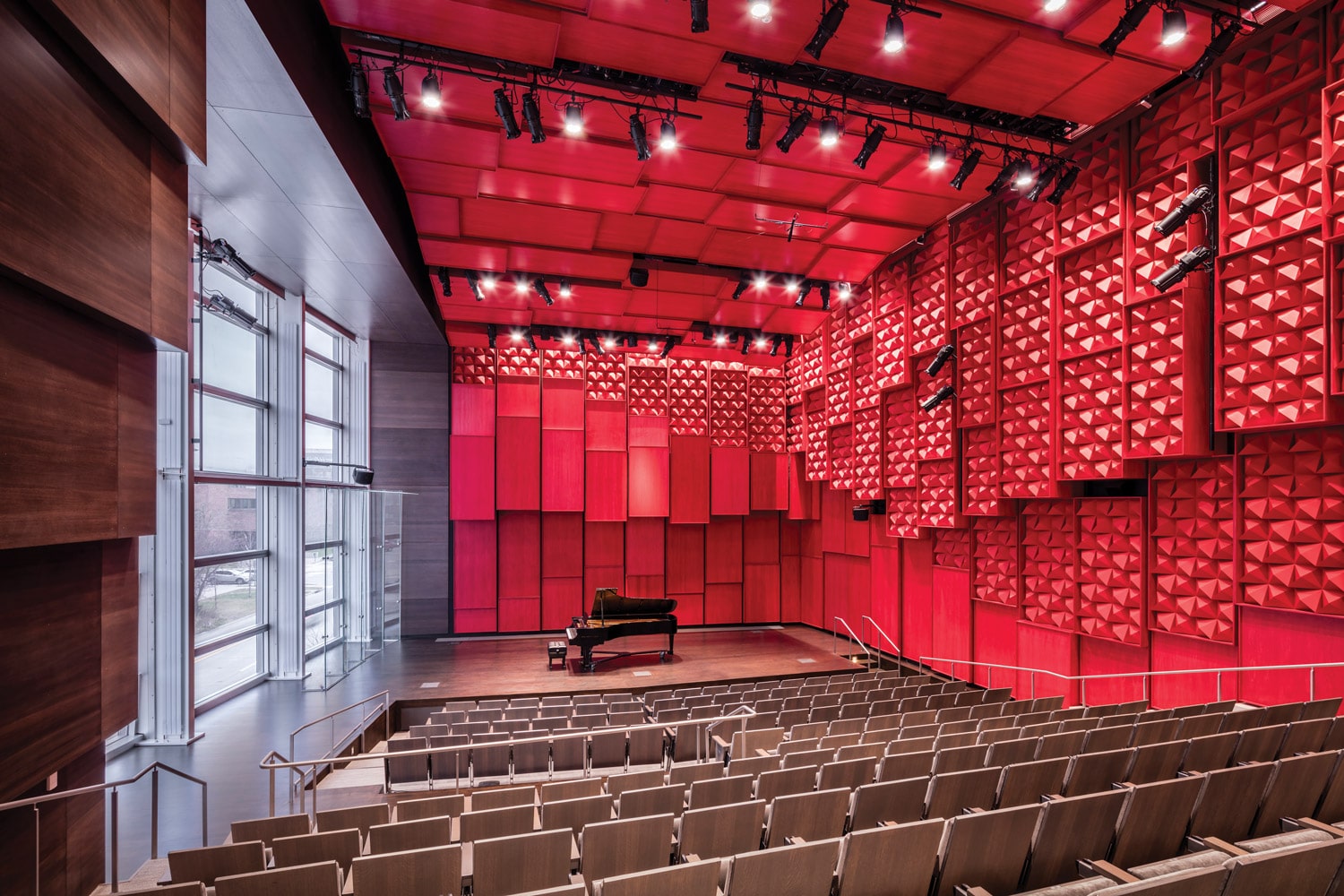
Acoustic diffusers are often used in concert halls, theaters, and lecture halls to ensure even sound distribution. Photo courtesy of LMN Architects
Of course, acoustic design isn’t only about reducing sound transmission, as some spaces are actually intended to distribute sound. Diffusion—or the spreading of sound evenly throughout a given environment—is one of the single most important aspects of acoustic architecture. Adequate diffusion is especially crucial when it comes to the design of theaters, concert halls, conference rooms, classrooms, lecture halls, and other spaces where echoing is not desired.
Diffusers are acoustic design elements used to control echoes and other sound aberrations in a room and work by radiating sound energy in many directions rather than reflecting it back at an equal angle (i.e. echoing). Because acoustic diffusers do not actually remove sound energy but instead distribute it evenly throughout a room they still produce a live sounding space, making them ideal for use in performance venues.
Lighting
Proper lighting is key to being able to safely and effectively navigate a building, do work, and learn. “Light is a stimulant of our biological system that drives physiological change, constantly signaling to our bodies when to produce chemicals, initiate functions, and even clean our brains of the day’s plaque,” Jennifer Kirkpatrick, director of sales at American Lighting, previously wrote for gb&dPRO.
Daylighting
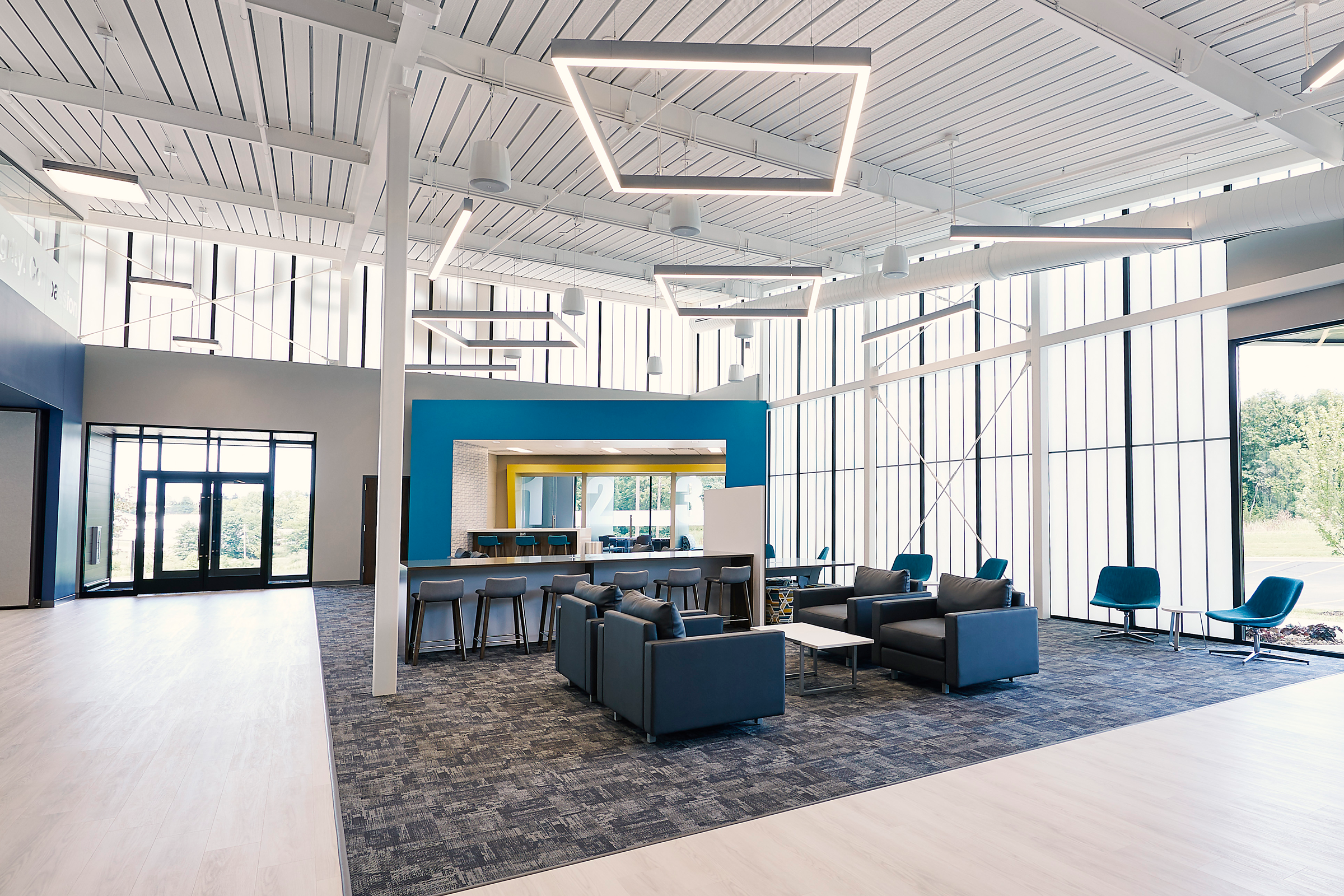
This beautiful daylighting solution from Kingspan Light + Air brings plentiful and controlled natural light into Burrell Health. Photo by Starboard and Port Photography
Natural daylight plays a large role in regulating the body’s biological systems and is integral in maintaining a healthy lifestyle. “By exposing your body to daylight throughout the day, your healthy human circadian rhythm will have a significant role in regulating your sleep-wake cycle and have a positive influence on your eating habits and digestion, body temperature, hormone release, and other important bodily functions,” Neall Digert, vice president of innovation and market development at Kingspan Light + Air, previously wrote for gb&dPRO.
Daylighting describes the process of using windows, skylights, and other light-admitting features to effectively illuminate a building’s interior using natural sunlight rather than artificial lighting during daytime hours. Kingspan Light + Air is an international leader in the field of sustainable daylighting solutions and offers a range of diverse products for both residential and commercial projects.
In addition to improving occupant mental and physiological health, daylighting solutions also help reduce energy consumption and operating costs.
LED Lighting & Lighting Controls
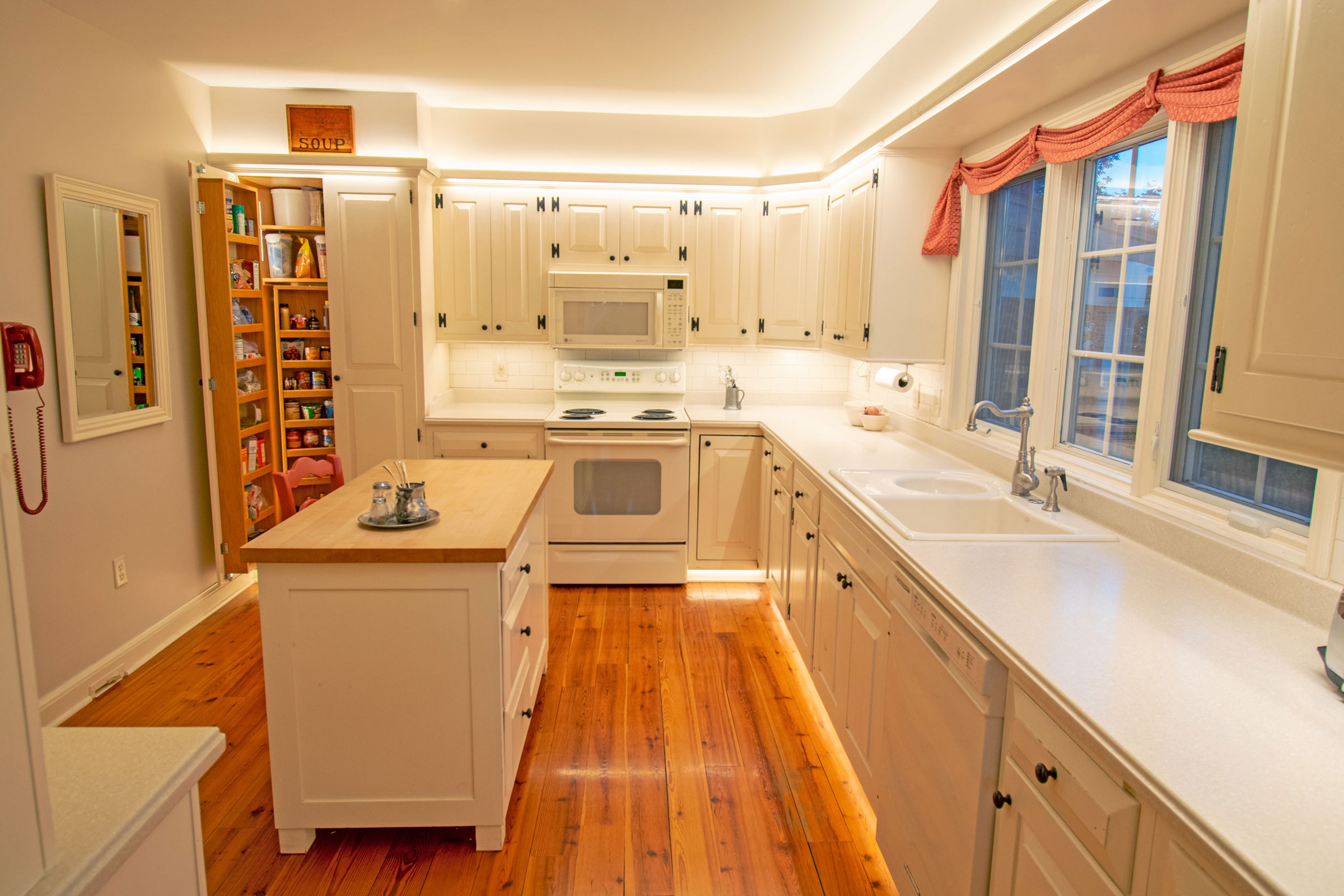
LEDs can help improve IEQ by mimicking natural daylight and aiding in the regulating of the body’s circadian rhythm. Photo courtesy of American Lighting
Of course, it isn’t always practical nor possible to rely on natural sunlight to adequately illuminate an entire building. In spaces where artificial lighting is required, LED lights should be installed—both for their unparalleled energy efficiency and versatility. The average LED light uses up to 90% less energy than standard incandescent or fluorescent bulbs, resulting in fewer carbon emissions and reduced operating costs.
Thanks to their wide range of colors, wavelengths, and lighting temperatures, LEDs can help improve mood and occupant productivity as they are able to better simulate natural sunlight compared to traditional fluorescent and incandescent lights. Many LED light fixtures are also compatible with dimmer switches, a form of lighting control that allows occupants to adjust the lighting to their desired brightness.
Appropriate lighting and access to lighting controls also helps make buildings more inclusive to those with age- and disease-related vision challenges as well as persons who experience acute light sensitivity.
Aesthetic Quality & Comfort
One of the more recent considerations in IEQ is how the aesthetics of a space influence occupant experience and perceptions of comfortability. This category is largely rooted in the concept of biophilic design, an architectural approach that intentionally seeks to connect a building’s occupants directly or indirectly to the environment and the natural world at large.
Vegetation & Living Walls

A living wall makes this university space more inviting. Photo courtesy of Ambius
Increasing occupants’ exposure to vegetation—either in the form of potted plants or living walls—is known to have a positive effect on the brain and even contributes to reduced feelings of anxiety and stress, lowered blood pressure, and improved alertness. “When you see a green wall you’re immediately drawn to it. It’s alive, it’s interesting, and it fulfills our biophilic needs,” Matt Hills, a vertical garden and green wall expert at Ambius, previously wrote for gb&d. “Plants make places nicer to hang out in, and they also help clean the air.”
Ambius is a global leader in creating smarter, healthier spaces through plants, green walls, scenting, holiday décor, and air purification.
Imagery & Views of Nature
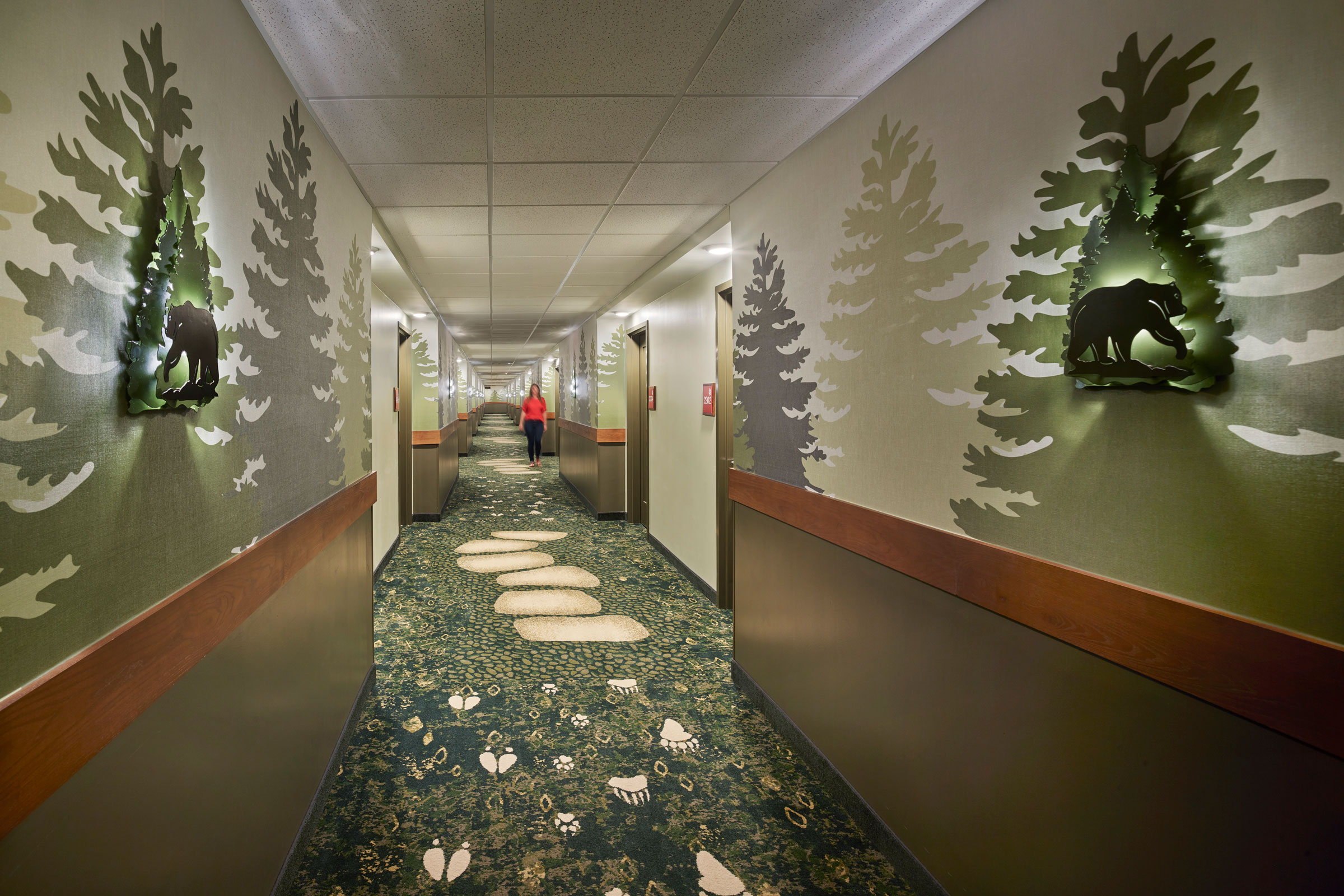
Photo courtesy of Koroseal
IEQ can also be improved by providing occupants with views of nature or nearby green spaces like green roofs and parks. Studies show that access to these sorts of green spaces—even just a visual connection—can improve psychological health and reduce stress, which in turn can help bolster productivity and, in the case of health care facilities, even reduce patient recovery times.
Similarly, including imagery of local landscapes and environments is an excellent way to create a sense of place and makes it easier for occupants to connect and relate to the world around them. Natural imagery can take the form of conventional photographs or be represented in more abstract mediums like paintings, murals, or wall art. Koroseal, for example, is a leading provider of commercial wallcoverings and offers a range of nature-inspired products that support a variety of biophilic designs, macrophotography, and other graphical applications.
Natural Shapes, Patterns & Geometries
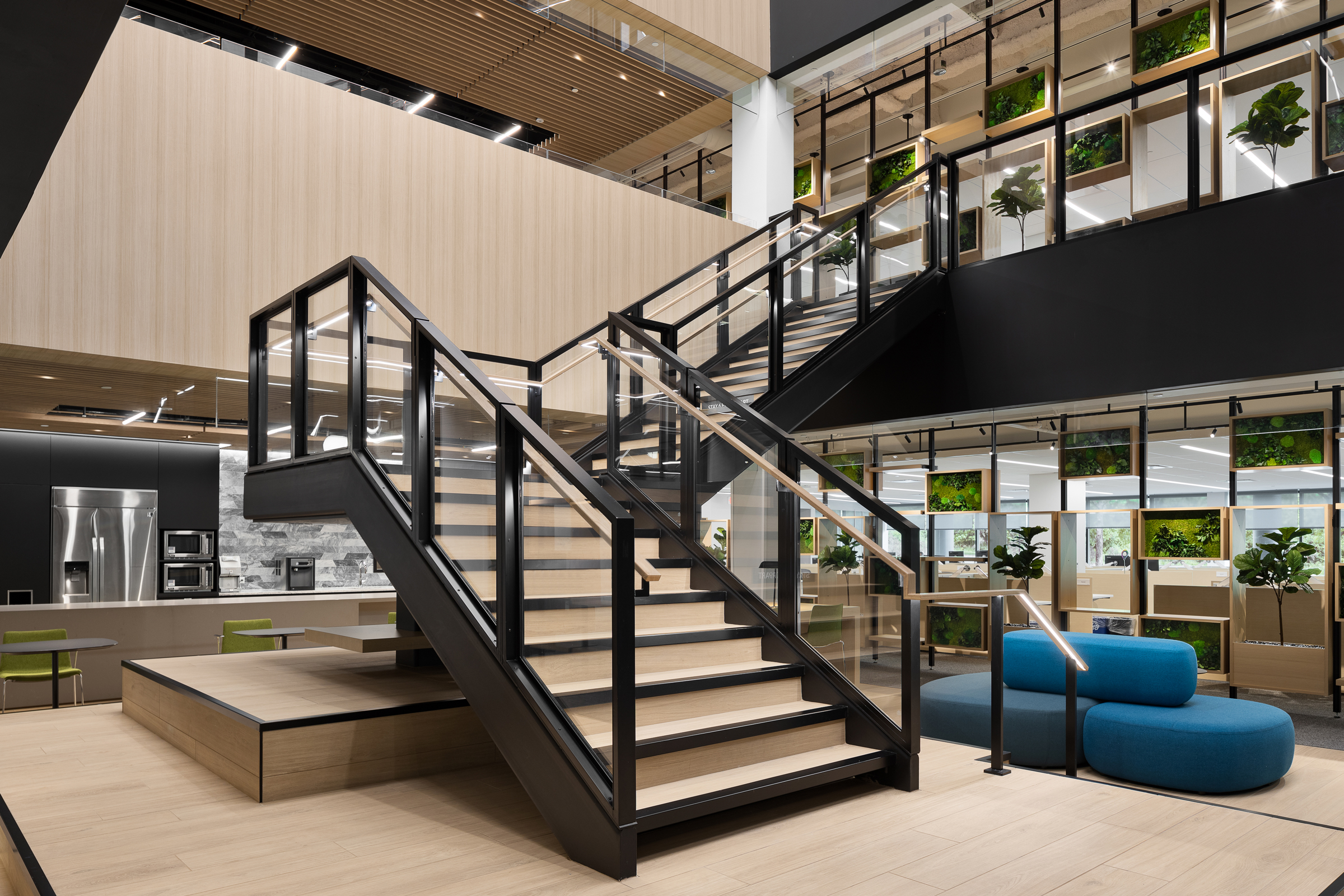
Designers can use images of nature, a natural color palette, and biomorphic shapes and patterns to mimic aesthetic qualities of nature. Photo courtesy of Ted Moudis Associates
In lieu of imagery and graphics, nature may be invoked in an even subtler manner by way of organic shapes and patterns. These geometries are reminiscent of those commonly found in nature, and as such, are typically imperfect and irregular. Organic shapes and patterns are generally characterized by curved lines as well as soft and uneven edges—qualities that tend to communicate comfort, familiarity, and approachability.
“Now you’re seeing these shapes and forms be extracted from nature and applied in innovative ways to things like flooring to truly have an impactful psychological effect on how you experience the space,” Ariel Lumry, interior project designer at Perkins&Will, previously told gb&d. “It’s the softness and the curves and repetition of patterns that are natural in origin. We automatically relate to it without even realizing it.”

